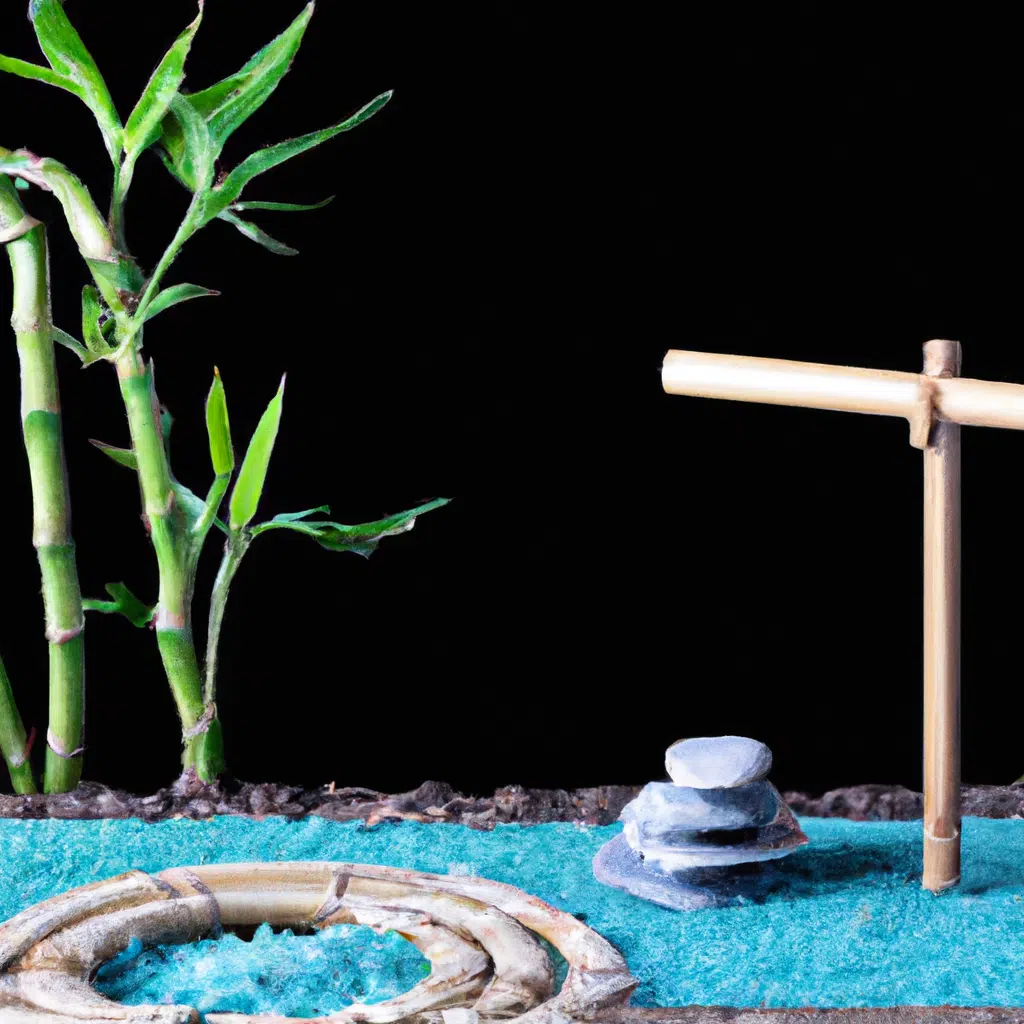If you’re looking for a way to create a peaceful oasis in your backyard, a zen garden might be just what you need. Zen gardens, also known as Japanese rock gardens, are designed to promote inner peace and tranquility. They are often minimalist in design, with simple elements that work together to create a calming atmosphere. In this article, we’ll discuss some minimalist design techniques for creating a zen garden that will help you achieve a sense of calm and relaxation in your own backyard.

What is a Zen Garden?
Before we dive into the design techniques, let’s first define what a zen garden is. Zen gardens are a type of Japanese garden that originated in the 14th century. They are typically small, enclosed gardens that are meant to be viewed from a single vantage point, such as a porch or window. Zen gardens are designed to be contemplative spaces, where visitors can meditate and experience a sense of tranquility.
One of the defining features of a zen garden is the use of rocks and gravel to represent water and islands. The rocks are often arranged in patterns that suggest ripples on the surface of water. Other common features of zen gardens include moss, sand, and small trees or shrubs.
Tip #1: Keep it Simple
One of the key principles of minimalist design is simplicity. When creating a zen garden, it’s important to keep the design simple and uncluttered. This means using a limited number of elements and avoiding ornate decorations.
Start by selecting a small area of your yard to use for the garden. You can use a raised bed or create a border around the area to define the space. Next, choose a few key elements to include in the garden, such as rocks, gravel, and moss. Keep the design simple and avoid adding too many plants or decorations.
Tip #2: Use Rocks to Create a Focal Point
Rocks are one of the most important elements of a zen garden. They represent islands in a sea of gravel, and are often arranged in patterns that suggest ripples on the surface of water. When selecting rocks for your garden, look for ones that have interesting shapes and textures.
To create a focal point in your garden, consider arranging the rocks in a specific pattern or grouping them together. You can also use larger rocks to create a sense of balance and harmony in the space.
Tip #3: Add Moss for Texture
Moss is another important element of a zen garden. It adds texture and a sense of age to the space, and can help create a feeling of tranquility. Moss is also relatively easy to care for, making it a great choice for a low-maintenance garden.
To add moss to your zen garden, look for areas where it naturally grows, such as shady spots or areas with high humidity. You can also buy moss spores and grow it yourself. Once the moss is established, it will spread and create a lush, green carpet that adds to the overall aesthetic of the garden.
Tip #4: Use Gravel to Represent Water
Gravel is another important element of a zen garden. It represents water and creates a calming, meditative atmosphere. When selecting gravel for your garden, choose a type that has a smooth texture and a uniform color.
To create the illusion of water, rake the gravel into patterns that suggest ripples on the surface of a pond. You can also use larger rocks to represent islands in the water, or add a small fountain or water feature to create a sense of movement and sound.
Tip #5: Choose Plants Wisely
Plants are not the focus of a zen garden, but they can be used to add color and texture to the space. When selecting plants for your garden, choose ones that are low-maintenance and have a simple, understated beauty.
Some good choices for a zen garden include small trees or shrubs, such as Japanese maples or dwarf conifers. You can also add ground cover plants, such as moss or thyme, to create a lush carpet of green.
Conclusion
Creating a zen garden is a great way to add a sense of peace and tranquility to your backyard. By using minimalist design techniques and a limited number of elements, you can create a space that promotes inner peace and relaxation. Remember to keep the design simple, use rocks to create a focal point, add moss for texture, use gravel to represent water, and choose plants wisely. With a little planning and effort, you can create a zen garden that rivals even the most elaborate Japanese rock gardens.
